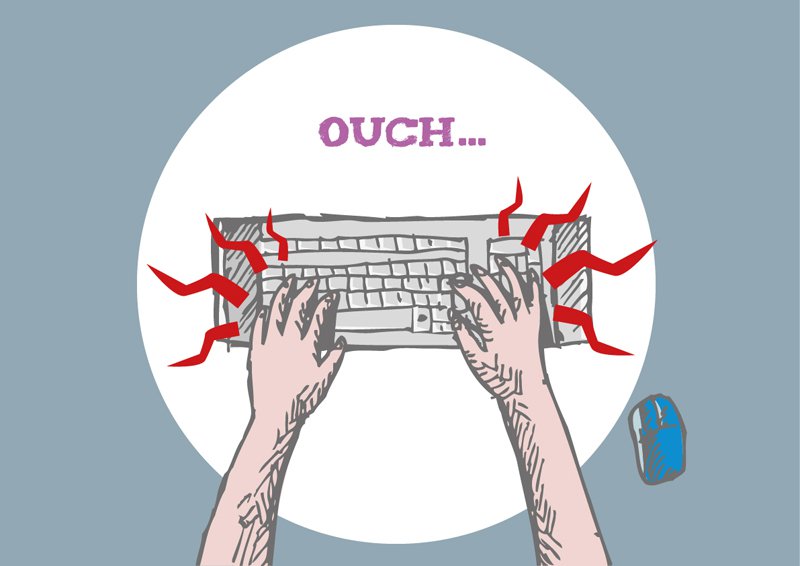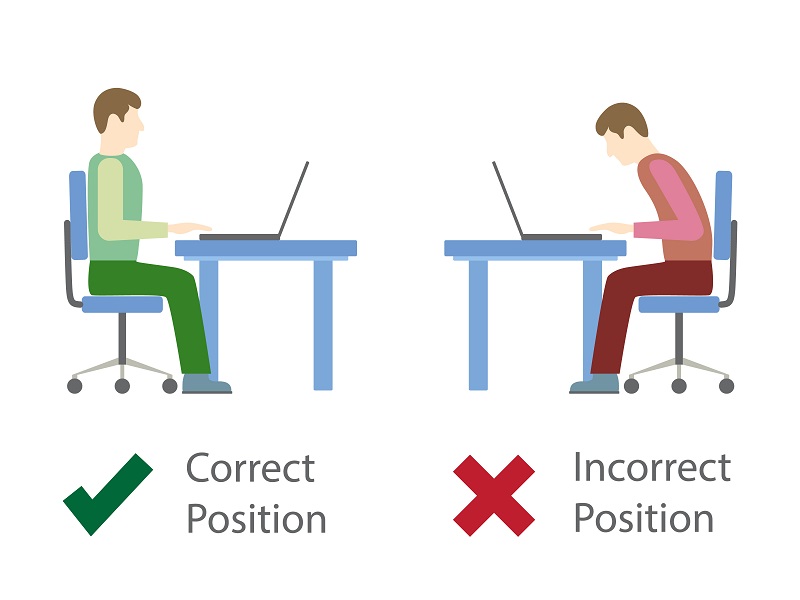Repetitive strain injuries (or RSIs) are one of a myriad of health threats to digital workers. Hunching over a laptop, sitting all day, or constantly craning your neck to read your smartphone all takes a toll on your body.
What are Repetitive Strain Injuries?
Repetitive strain injuries are potentially debilitating conditions that result from overusing your hands to perform a repetitive task. For example, typing on your keyboard or clicking your mouse.
As a result, you could incur damage to your muscles, tendons, and nerves across your neck, shoulders, back, arms and hands. This damage may result in pain, weakness, numbness, tingling sensations or reduced movement and motor control.
Some common RSIs also include carpal tunnel syndrome, bursitis, rotator cuff tendonitis and tennis elbow.
There are three primary risk factors behind repetitive strain injuries, namely poor posture, poor technique and overuse.
For example, poor posture can exacerbate any back and neck injuries. Constantly leaning to one side to use your mouse can cause spinal misalignment. Overusing a computer screen can also lead to eye strain.
So, how can you prevent RSIs? Here are our top tips:
Sort out your workstation
First, you need to assess your workstation. There is a lot of online advice available to help you set up a suitable environment. Here are some of the points you may want to consider:
- Adjust the height of your chair to make sure your knees are level with your hips.
- Sit up straight in your chair with your back touching the back of your chair.
- Adjust your screen so it’s roughly an arm’s length away. It should be directly in front of you and your eyes should rest about one-quarter from the top of the screen.
- Make sure your mouse and keyboard are within easy reach so you don’t have to stretch or put your hands in an uncomfortable position. It also helps to make sure your arms are at a 90-degree angle when you’re typing.
You don’t need to spend a fortune to create the perfect workstation. For example, a pile of books is an effective stand for your monitor. A simple yoga ball can make an excellent alternative to an expensive ergonomic chair.
Create a posture checklist
Once your workstation is set up, it is important to use it correctly. Good posture is critical on a day-to-day basis and simply sitting up straight won’t save you from RSIs.
Here’s a quick checklist to make sure you’re maintaining a good posture:
- Are your feet flat on the floor?
- Are your knees over your feet and bent at a right angle?
- Is your pelvis level with, or slightly higher than, your knees?
- Is your lower back arched in?
- Is your upper back naturally rounded?
- Are your shoulders and arms relaxed?
- Is your neck aligned with your spine and relaxed?
Your chair will play a big part in your posture. An adjustable chair can help to achieve a good posture. You could even invest in an ergonomic kneeling chair or use a yoga ball at your desk to improve your posture.
Master the proper typing technique
There are three keys to mastering the proper typing technique to prevent Repetitive Strain Injuries:
- Keep your wrists straight: this will reduce the strain on your tendons and the nerves running through your wrist. A split keyboard could further help you keep your wrists straight.
- Let your hands hover over the keys: in other words, don’t rest your wrists on the desk or your keyboard when you’re typing. This lets the muscles in your back share some of the work and allows you to keep your wrists straight.
- Don’t strain your fingers: move your whole hand to reach harder-to-reach keys. Also, use two hands when you need to hit two keys at the same time. And don’t pound the keyboard to further reduce the impact on your hands.
Take a break and stretch
Set a timer and try to do some basic stretches every half an hour to mix things up and keep your body moving in different ways. It also helps to look away from your screen regularly to reduce eye strain.
You don’t have to work up a sweat. You could just do a few simple yoga moves from the comfort of your chair.
Also, try taking a few deep breaths. You could choose to focus on how your breath feels in different areas of your body. For example, feel your breath expanding in your belly, as you breathe in, or take a breath into the sides of your ribs so your breath moves unilaterally.
As with any ailment, prevention is better than cure. So, make sure you keep yourself in check, take regular breaks and keep your posture aligned to protect your body and prevent repetitive strain injuries.











